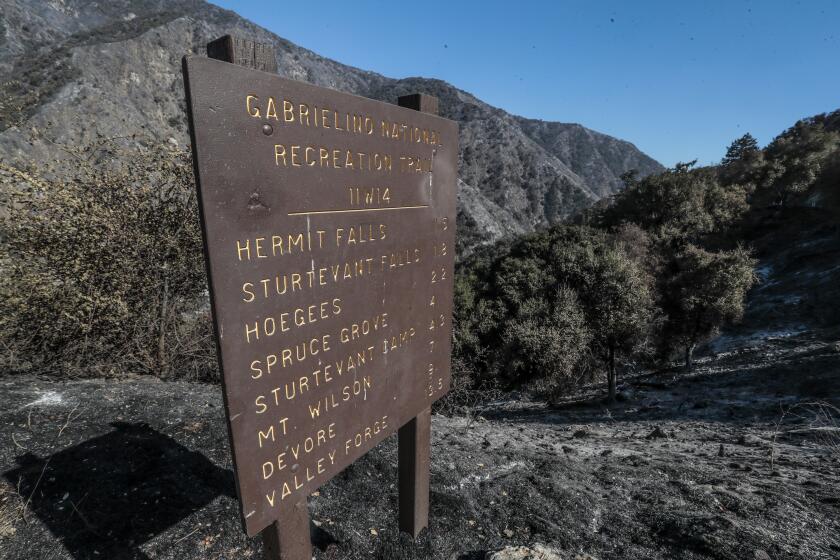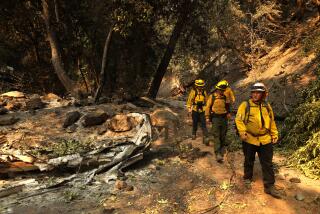After the Bobcat fire, a century-old community hopes to rebuild its storied past
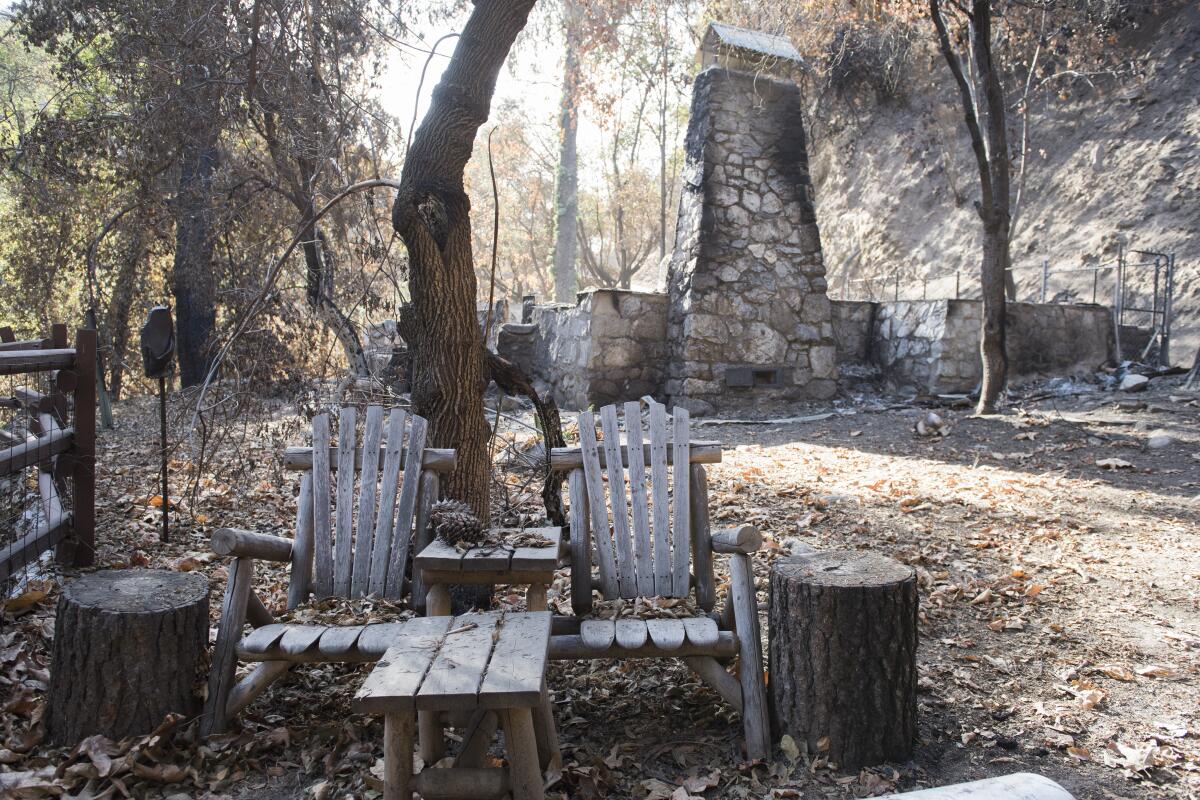
It was one of the hottest weekends ever recorded in Southern California, but Greg Vanni’s mind was elsewhere. All day Sunday, Sept. 6, his phone received one ominous message after another: ALERT. EVACUATION. FIRE.
From the safety of a friend’s house in Newport Beach, Vanni, 67, watched on TV as the Bobcat fire raged out of control in the Angeles National Forest. No one knew at the time that it would grow into one of the largest wildfires in Los Angeles County history, scorching 115,000 acres and destroying dozens of homes and structures.
But when Vanni saw the alerts and aerial footage from the scene, he realized that dozens of historic cabins located in the forest’s Big Santa Anita Canyon, just north of Sierra Madre, were in serious danger. One of those cabins was his own.
Weeks went by without word — the Forest Service was too busy fighting the fire to take inventory of the canyon — but Vanni finally received a text from his friend and fellow cabin owner, John Wood.
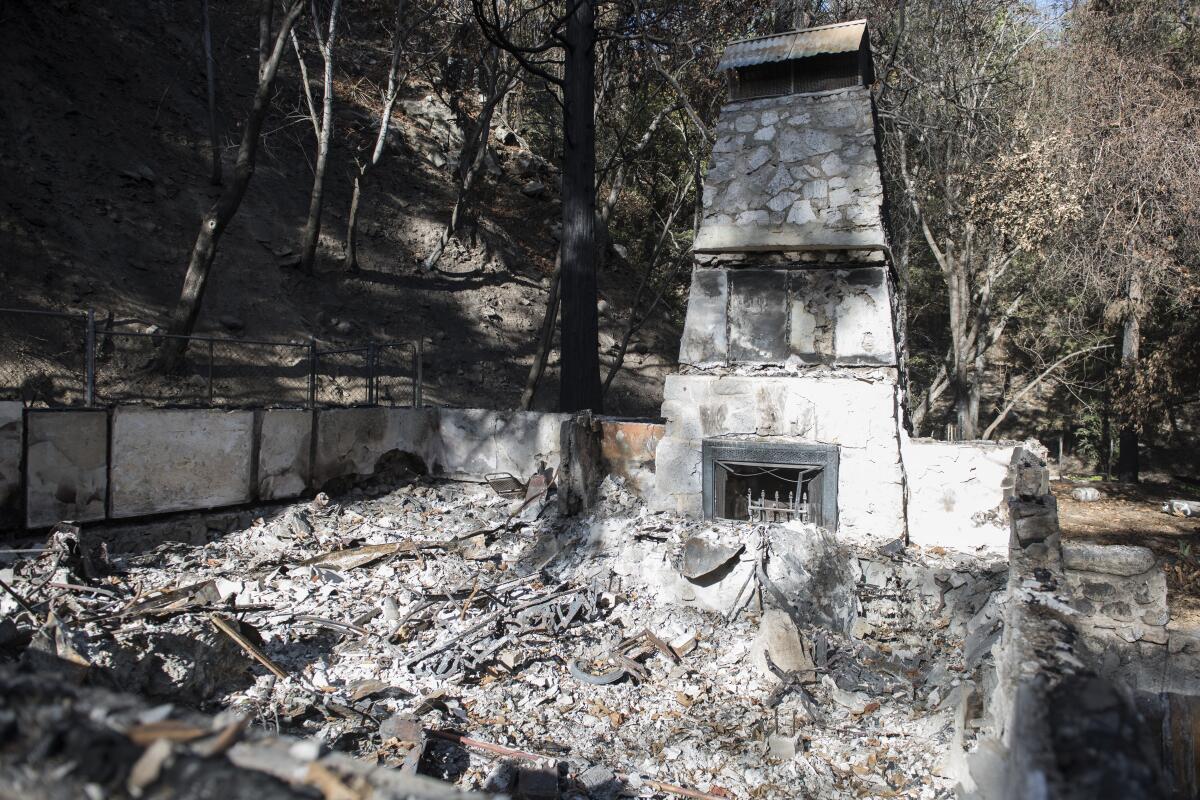
“I’m so sorry, Greg,” the text said.
Vanni knew then that his fears had been realized. The Bobcat fire had destroyed his cabin, along with 16 others tucked deep in the canyon. Only 63 of 80 structures, which are privately owned within the U.S. Forest Service Recreational Residence Program, remain.
Now, just over two months later, this small but resilient community is taking stock of its losses and wondering whether — and how — to rebuild in order to preserve its storied past. More than 200 cabins were originally built within the area’s woody oaks and bay laurels between 1906 and 1936.
Access to Big Santa Anita Canyon in Arcadia has been blocked since the Bobcat fire swept through. Property owners don’t know if their homes survived.
But over the last century, many of those structures were lost — some to fire, some to flood and some to disrepair.
Though dwindling in size, the community remains fiercely proud of its history and determined to preserve what’s left.
“It’s more like stewardship than ownership,” said Ben Fitzsimmons, president of the Big Santa Anita Canyon Permittees Assn. “By losing a cabin, you lose so much more.”
The rugged outposts hark back to the “Great Hiking Era” of California history, Fitzsimmons said, when early Angelenos relied on the Big Santa Anita Canyon as a portal from the city into the great outdoors.
To this day, most of the cabins in the canyon have no electricity or running water. Many have been in the same family for decades, thanks in part to a unique real estate arrangement that allows people to own the cabins while leasing the land from the Forest Service for 20 years at a time.
And although the cabins cannot legally be used as primary residences, many owners spend every weekend there. Vanni, who lives in Arcadia, has made the mile-and-a-half hike to his cabin almost every Friday or Saturday since he first purchased it for $15,000 three decades ago.
The result of all that history and hard labor is a close-knit community of nature-lovers from all walks of life: Democrats and Republicans, lawyers and PhDs, blue-collar workers and young families, and even a Nobel Prize winner and a retired judge.
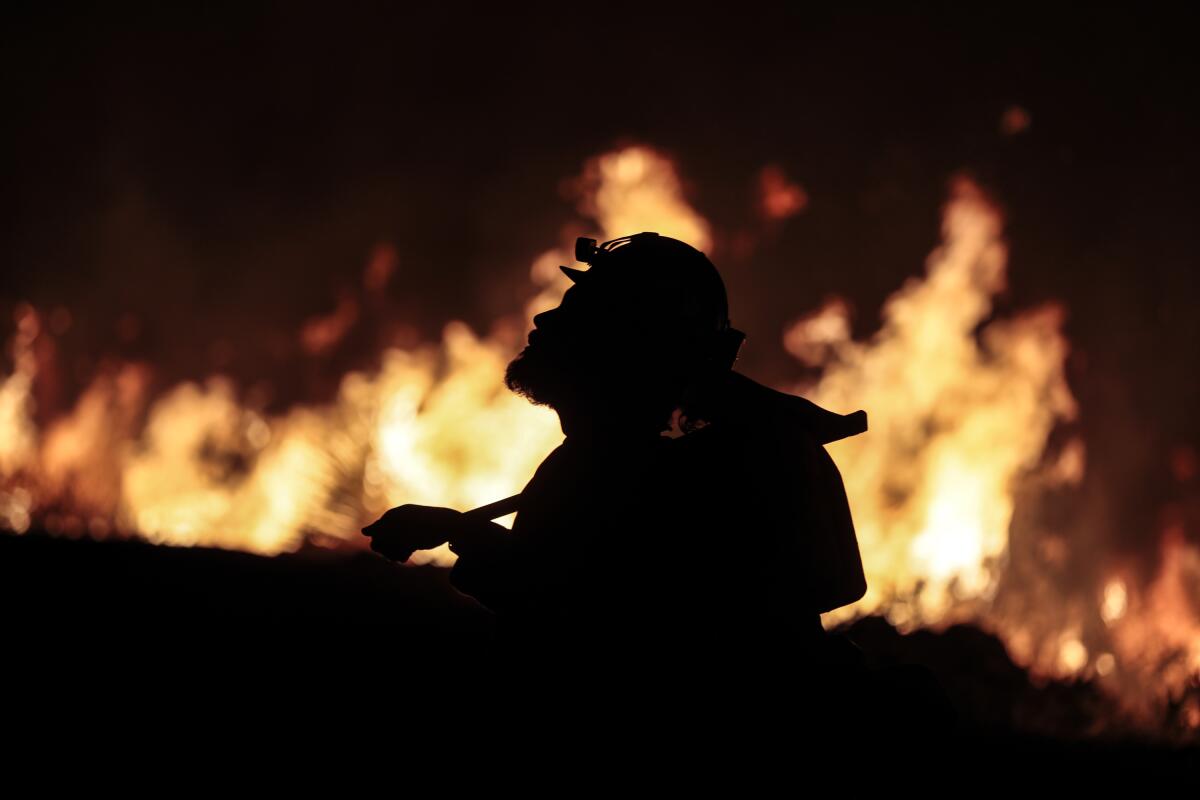
But all that was interrupted when the Bobcat fire ravaged a large swath of forestland stretching between the San Gabriel Mountains to the Antelope Valley. Once-green hillsides are now chalked with ash, and oak trees are twisted like knots of iron. The smell of smoke hangs over the blackened landscape.
“These cabins have the bones of history in them,” Vanni said as he kicked through the pile of metal, glass, rebar and rubble where his cabin once stood. “A lot of that is permanently lost, I’m afraid.”
It’s a profoundly personal loss, but it’s also a public one. Hikers and owners alike took joy in the cabins, and people passing through often stopped to marvel at the homes, or even play a game of croquet with the neighbors. The whole community watched with horror as the fire encroached on the canyon.
Despite the loss — and the ever-increasing threat of wildfire in California — almost everyone in the canyon is determined to rebuild. But the Forest Service hasn’t yet determined which cabin owners, if any, will be permitted to do so.
“Nobody’s against rebuilding, but what we need to do is be smart about it,” Forest Service spokesman John Clearwater said. “A lot of the cabins are built low in the valley, and one of the things that needs to be assessed is the long-term effects of runoff, and how the terrain is going to be affected by drainage following the fire.”
Rockslides and mudslides are a strong possibility, Clearwater said, and a complete environmental assessment could take months, if not years.
But even if safety weren’t an issue, there are a number of other hurdles to rebuilding: The owners must follow strict guidelines for historical buildings and navigate miles of bureaucratic red tape, including city permits, county codes and federal forest rules.
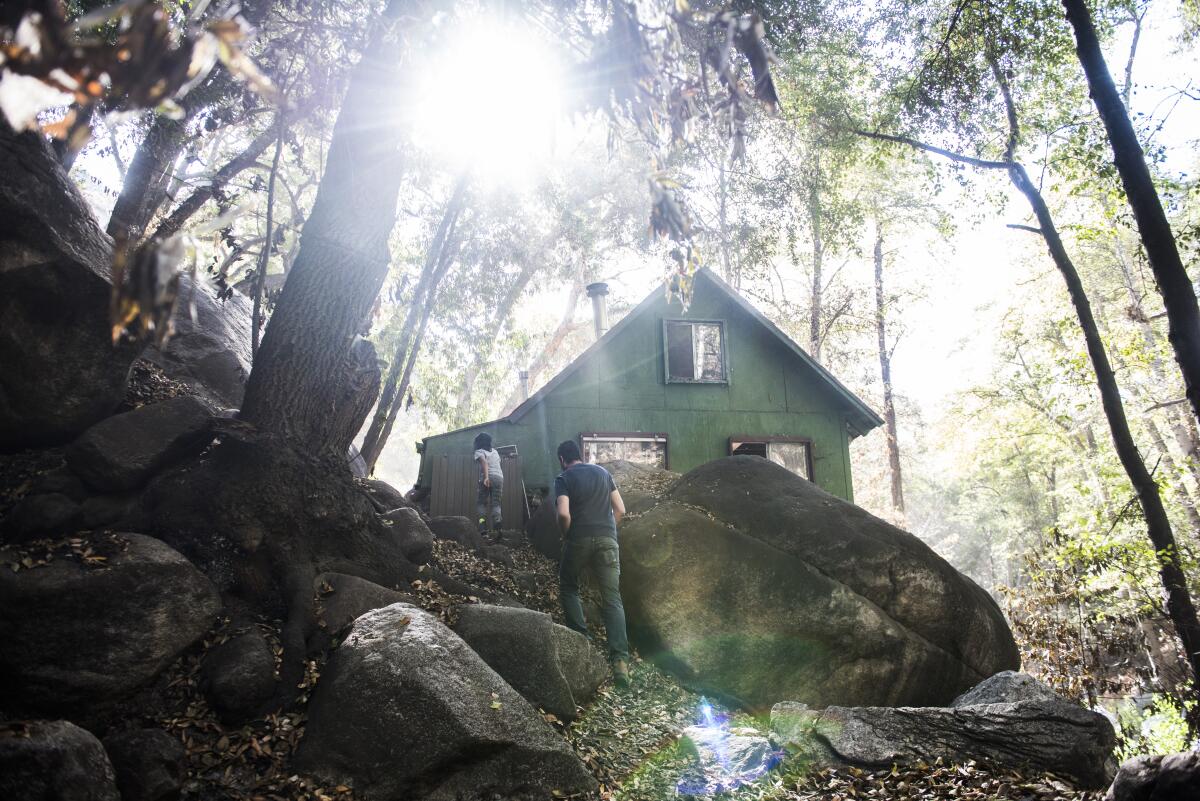
“It’s a bittersweet feeling,” said Ali Jeevanjee, who, along with his wife Poonam Sharma, became the newest members of the canyon this year. They lost their outhouse in the blaze, but the main cabin survived.
“We bought this cabin for generations,” Jeevanjee said. “You’re getting a cabin in the woods, but you’re also getting a great community.”
Their two children, Noor, 11, and Surya, 7, spent what they called a “pandemic summer” in the canyon, reading books, drawing pictures and splashing in the nearby creek. Now, the couple, both architects, wants to do whatever they can to help the community get through this difficult period.
“We were very fortunate, and we are looking forward to helping everybody rebuild,” Sharma said.
But goodwill alone can’t account for logistics. Because there is no electricity in the canyon, any power tools would have to run on generators. There are also no roads, so construction supplies and building materials must be carried in by foot or via donkeys, just as it was a century ago, from the Adam’s Pack Station at the top of the hill.
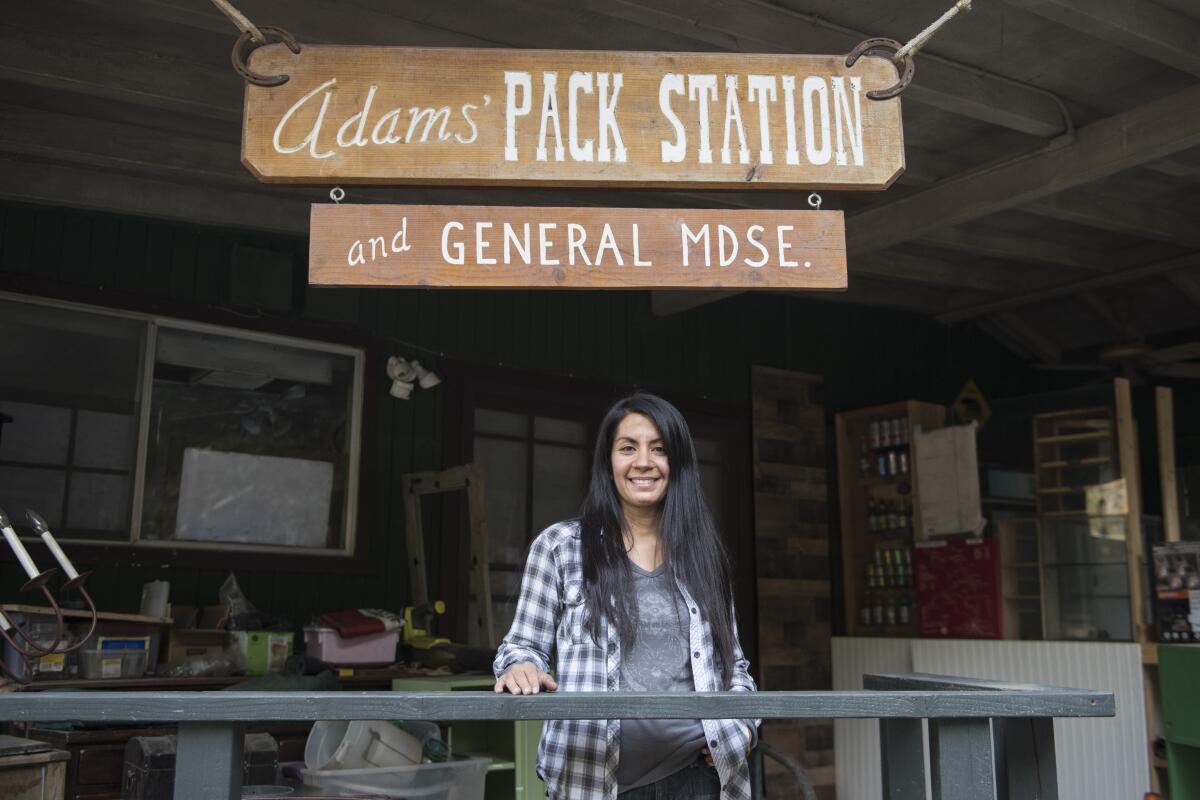
Maggie Moran, who owns and lives at that pack station, said she spent the weeks after the fire wondering how long she could hang on: With 20% of the cabins destroyed and the park closed for safety reasons, the usual flow of people has almost entirely diminished.
“I thought, ‘what good am I without the cabins, the cabin owners?’” Moran said. “It’s not a pack station without them. No matter how much you try to prepare for something, you just don’t know what’s going to happen.”
The Forest Service has said it intends to keep the area closed to the public until at least April 2022, which will also eliminate Moran’s profits from sales of food, drinks and park passes to visitors.
After the fire, a friend encouraged Moran to start a GoFundMe page. She hesitated, citing all the other hardships that people are going through this year, but donations were quick to pour in. To date, the pack station has received more than $40,000 in contributions, she said — a testament to the strength of the Big Santa Anita community.
“I’m pretty grateful for it, and I’m so humbled by the amount” Moran said.
“But I don’t think it has anything to do with me,” she added. “It’s more so that people love the community and they love the canyon. They find that this place becomes their home too.”
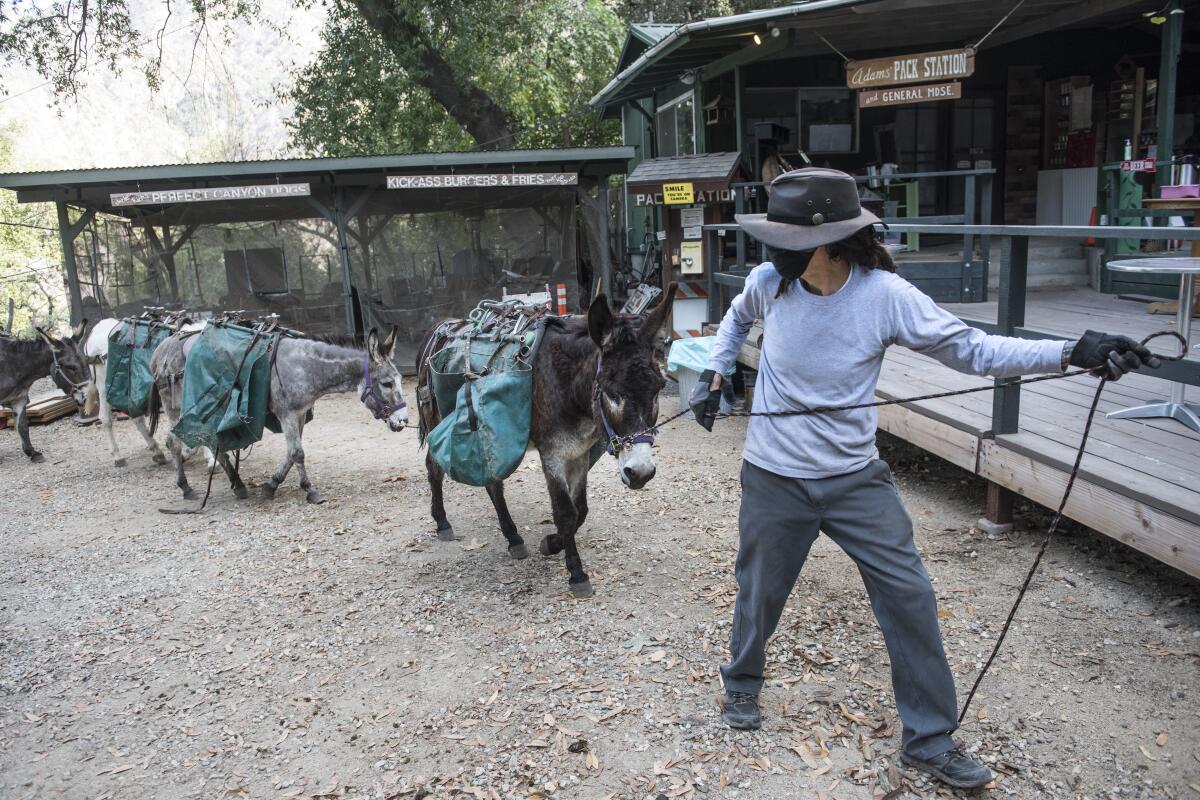
More to Read
Sign up for Essential California
The most important California stories and recommendations in your inbox every morning.
You may occasionally receive promotional content from the Los Angeles Times.
